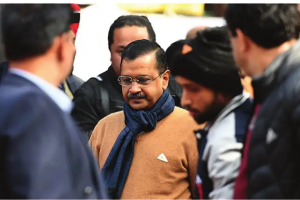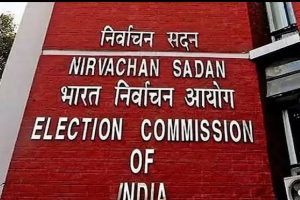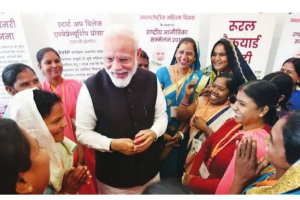The pandemic has severely affected the tourism industry of the country. Reports were written about how natives of popular tourist places had no source of livelihood since their employment is completely dependent on the inflow of tourists. They received almost no institutional help and were left to fend for themselves.
Tourism is a luxury industry, and the livelihoods of several smallscale service providers and workers is dependent on it. Tourism is looked at as a blessing from the world of the rich to those living in remote areas it creates jobs for locals (hotel and restaurant managers, valets, cooks, waiters, toto and taxi drivers, local artisans and artists), improves connectivity of remote areas, and acts as a getaway for those who can afford it.
The World Bank lists some positive effects of tourism: poverty reduction and upgradation of skills among locals, increase in GDP of the host country, and protection of the environment and cultural heritage. Being an important source of foreign exchange, the state supports the promotion of tourism. Several governments advertise their states as the ideal tourist destination, through catchphrases like Incredible India, Atithi Devo Bhava and God’s Own Country.
Promotion of tourism generally implies ‘developing’ aesthetic semiurban areas. These places have been left out of the conventional discourse of development and are addressed insofar as it would attract tourists. Identifying the ‘potential’ of these places, the government often acts as agents for big businesses, giving them incentives to set up hotels and tourism packages. Hundred per cent Foreign Direct Investment is allowed in the tourism and hotel sector, and a tax holiday has been offered for hotels located around UNESCO world heritage sites.
Such incentives are provided to businesses in other places as well. For example, the Karnataka Tourism Policy 2015-2020 attempts to attract private investors by offering a complete exemption and reimbursement to projects which aim to develop tourism in “most backward and more backward regions.”
There is a need to shift the focus from picturesque luxuries and wanderlust of tourists to workers in general and local inhabitants of tourist places, in particular. The state intervenes to acquire land in the interest of big businesses, who are attracted to set up luxury hotels and other recreational services. Consequently, the original inhabitants, dispossessed of their own land and livelihood, receive either no or inadequate compensation.
Furthermore, since most lack the skills or training for a formal job, displaced locals are compelled to take up some form of informal work to earn their living auto, bus, and toto drivers, workers in small restaurants, valets in hotels, photographers who run after tourists, guides, etc. Their livelihood, now, has not only a component of economic exploitation that is common across most occupations, but also a situation of dependence where urban tourists hold power over them.
The motivation is to cater to the tastes and preferences of foreign visitors and upper-middle class domestic travelers who usually reside in congested urban areas. They typically look for some respite from their busy lives which makes them appreciate the tranquility and ‘countryside feels’ offered in touristy places. These urban tourists wish to experience the lifestyle of local people, which is deemed idyllic and romantic. The tough conditions of living are thus simulated in an attractive fashion, making a mockery of the vulnerability of the local people’s lifestyles.
For example, Lemontree Mudhouse in Pune urges tourists to “show the kids what it’s like to live as a farmer does. Pure. Unsullied.” and Red Earth Kabini resort in Mysore boasts on their website, “Our cottages at Kabini…are built with red mud that was originally dug up when the site was being excavated”.
Pushkar Bagh Resort in Rajasthan advertises to the rich tourists the livelihoods of the locals in their “Ethnic Village Safari” package: “The villages of Rajasthan are a classic way of exploring the arduous life of Rajasthani folks who thrive on the stubborn pulse of nature…the people caress a unique lifestyle that surely adds colour to the village lifestyle…half-naked children playing with their tails is what gives Rajasthani villages an extra edge for rural tourism…a life still veiled from electricity, where you might have to fetch your own pail of water…household women, busy in cleaning their courtyards or designing the mud walls with plasters of clay, cow dung and hay…try out churning of some fresh butter from the brimmed milk pot…tourists are usually amazed to see how the people wash their utensils.
They mud their plates until they are clean, and then rub them with a piece of cloth.” The advent and progress of the tourism business thereby robs the locals of not only of their land and livelihood but also of their cultural identities. However, culture is not wholly destroyed. Instead, big capital appropriates part of this culture, in order to advance their motive of earning revenue. These services are demanded by urban tourists who wish to stay connected to their roots and culture and at the same time have authentic, traditional, and romantic experiences.
These sentiments are packaged, and big hotels take this opportunity to make their packages more attractive and appealing. Accordingly, the native culture is advertised under ethnic branding to appeal to elite tastes of consumers. To please and pamper the foreign and urban tourists and give them a ‘taste’ of the region’s culture, locals are called in by big hotels and resorts to perform their local dance, song, and other forms of art. Thus, local artists are dependent on urban patronage, and are forced to garnish and serve their culture on a platter according to the tourists’ taste.
For example, Sam Sand Dunes Desert Safari and Resorts in Jaisalmer offer packages which include “Overnight Quality stay in Swiss Cottage tent, Camel safari…Warm welcome, Cultural evenings with Rajasthani performances around Roaring Camp fire.”; Anantya Tourism Kanyakumari attracts tourists to the “tribal experience” where “The dynamic young “Kaani kara” (members of the Kaani tribe) will lead you through a performance which showcases the oral storytelling tradition among the tribe…their healing music is sung in deep soulful voices with a chorus of singers accompanied by the ‘Kokkara’ (indigenous Kaani instrument).”
Svatma Hotel in Tanjavur advertises, “Svatma takes you to the master craftsmen who demonstrate the making of handmade jewellery as well as the Tanjavur style of painting.” Culture is also appropriated and commodified in the form of selling handicrafts made by local artisans. These are sold as souvenirs and memorabilia in gift shops. The struggles of the artisans are portrayed to appeal to the human side and goodwill of the rich tourists. The artisans need to make their product according to the latest trends and fashions dictated by the whims and fancies of urban tourists.
In many case studies, it was found that middlemen, businessmen and entrepreneurs muscle out small artisans to make big profits through these markets. While appreciating the scenic beauty, and local culture to satisfy our wanderlust, we also need to realise that the tourism industry in the current economic system, where shots are called by the wealthy, is yet another mechanism of reinforcing and perpetuating the power hierarchy. Tourism would look like just another transaction of services.
It would, however, not be difficult to trace a hierarchy of power and dependence in this scenario. The wealthy tourists from urban areas belong to the highest strata of this hierarchy, and the asymmetric relation between the locals and the tourists serves as another means to perpetuate social inequality. But this is often packaged in glossy packets of ethnic marketing. In situations like the pandemic, the disparity comes to the fore in an ugly manner, when we see that a simple decision by a wealthy household not traveling can bring hundreds of people to the brink of starvation.
(The writers are, respectively, a PhD student at Colorado State University and a PhD scholar at the centre for Development Studies (JNU), Kerala.)











